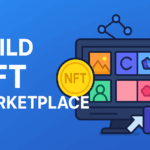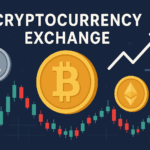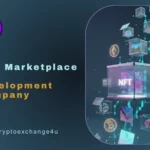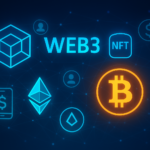If users are searching for a special kind of details namely about ERC20 Tokens and where they could Trade them, following article will give appropriate information’s.
One should know that Ethereum as a cryptocurrency, and start recognizing it for what it is a blockchain-based computing platform building an entire ecosystem for Smart contracts functionality and Deployment of Apps-Decentralized Applications.
Know about ERC20 Tokens
It is short form for “Ethereum Request for Comment,” ERC20 refers to the technical standard for deploying smart contracts on the Ethereum network. ERC20 refers to a common list of standards and rules governing token function and behaviour in the Ethereum ecosystem – thus finally permitting for uniformity and certainty in certain token interactions. Due to Ethereum’s familiarity, ease of deployment, and ecosystem as a whole, developers are immensely flocking to the network to create ERC20 tokens.
Main Purpose of ERC20 Tokens
Imagine you have four bikes which are all produced by separate manufacturers. Perhaps you’d need a unique key in order to unlock and start each of them. It is similar to what the Ethereum network is looking to curb through their establishment of the ERC20 token standard.
Suppose you had two other bikes which were even made by the same company. You’d still need two different and unique car keys to unlock them both. ERC20 tokens are the connecting standard amongst “bikes,” permitting drivers to coherent transition from bike to bike with just one key.
So finally before the creation of the ERC20 standard Smart Contracts, every change, wallet, and blockchain ecosystem had to develop new custom code just to add a token or project.
How ERC20 Tokens Created & Exchanged
In order for any cryptocurrency or token based on the Ethereum network to be considered ERC20 compliant, they have to follow set of requirements given below.
- totalSupply – As the name implies, totalSupply refers to the coin or token’s supply and ultimate cap of how many may be created and mined.
- balanceOf – Such function stores and returns the amount of tokens that exist in each address and due to its need of a known address, the users must be aware that such address would be publicly broadcasted.
- approve() – The “approve” function plays an integral role, and is used by the owner of the smart contract in order to authorize the address attempting to withdraw tokens from said address. .
- transfer() – It is sanctioned whenever the owner of the smart contract wants to send a specific number of tokens to another address.
- transferFrom() – It is used when one wants to manually send tokens or coins to a third-party, “transferFrom” virtually executes the same function but through automation of transaction approval.
- Allowance – In cases whenever a transaction is on the verge of being executed, the allowance function is triggered and checks whether a user’s balance and ultimate token supply is sufficient for transaction execution.
Apart from this six mandatory functions, there are three optional functions which may be employed and used by a project respectively as
- Name: Used in cases where the smart contract owner wants to broadcast the full name of the token created,
- Symbol: An abbreviation of the token’s full name in order to differentiate it from other tokens. A cryptocurrency and token’s symbol is typically 3-4 characters long and wholly unique to the blockchain ecosystem.
- Decimals: Number of decimal places the token would be calculated to. Most commonly, such number is set to 18.
Once tokens and coins have met all ERC20 token standards and looking to trade ERC20 tokens, then decentralized exchanges are good bet for variety and ease.
ERC20 Tokens reflects New Token Standard
One should properly understand when sending ERC20 tokens between accounts that you make sure to actually send to a smart contract which is configured to accept them. Finally ERC20 token standard permitting for easier and rapid deployment of decentralized applications on the Ethereum network, so it’s making more predictable and stable ecosystem.






















0 Comments